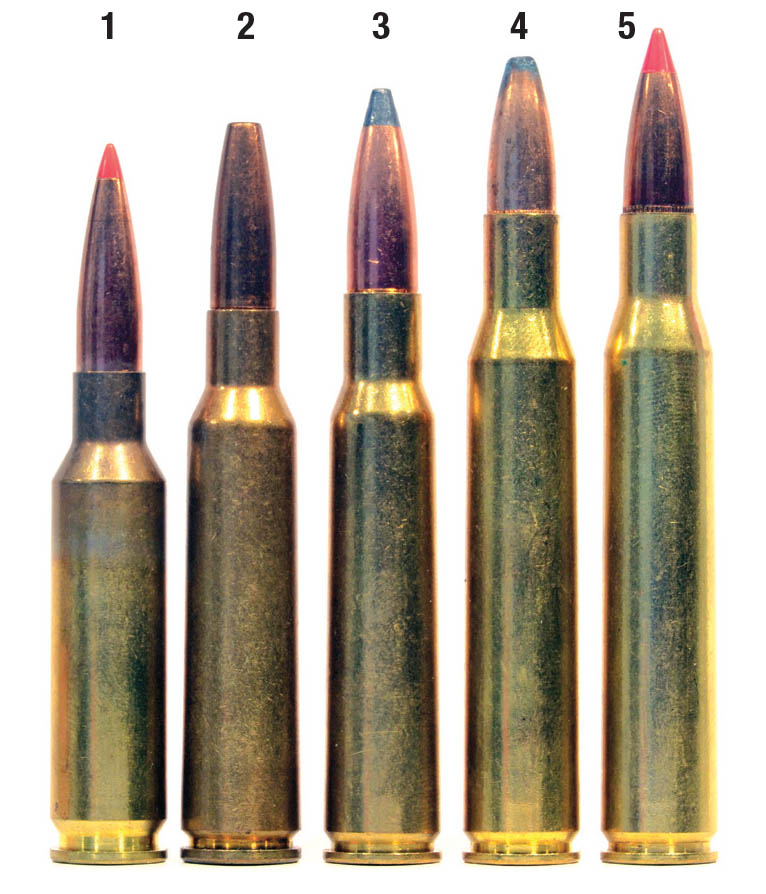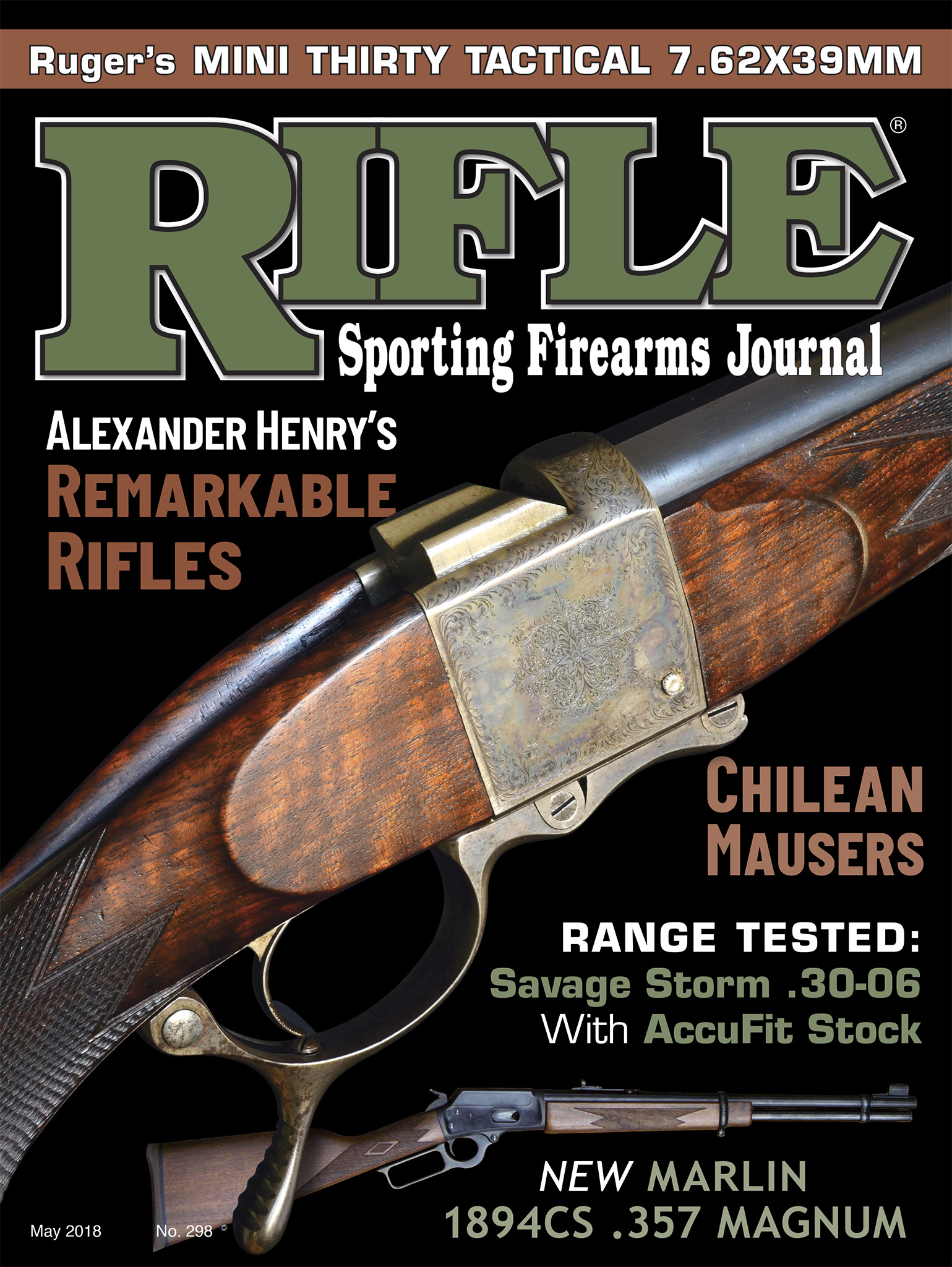Walnut Hill
The More Cartridges Change...
column By: Terry Wieland | May, 18

Forty years! One would think that in that space of time, given the many technological developments in everything from cars to computers, to say nothing of the Internet, there would be little left in O’Connor’s work that bears much relevance to the world today.
Well, try this on for size: In 1970, he wrote “It dawned on me then that if a bullet gives adequate penetration it does not have to be particularly heavy in order to kill large animals well.” Those words were in his book The Hunting Rifle and referred to a moose he shot in Alberta on his first Canadian pack trip in 1943. O’Connor used a .270 Winchester and a 130-grain bullet.
Through the 1950s, ’60s and ’70s, a great controversy raged over the relative merits of large, heavy bullets versus ever-lighter bullets at ever-higher velocities. When cutting through to the gist of both arguments, however, you find that both parties were absolutely correct. What was left out in the editorial slug-fests was a couple of conditions. One was the proviso that the lighter bullet had to be placed correctly, and it had to penetrate to the vitals. The second proviso, used by those favoring heavy bullets, was the assumption that the lighter bullets were not in the right place, and did not penetrate.
If these assumptions turn out not to be true, both arguments collapse. O’Connor is generally thought to be the man who, almost single-handed, made the .270 Winchester the standard favorite it became, but even he would disclaim that. Other well-known writers of the time also used and praised the .270, including Col. Townsend Whelen and Sports Afield’s Russell Annabel.
In that same book, O’Connor dealt with three cartridges – the .270 Winchester, .280 Remington and the then-brand-new .284 Winchester – in one chapter, and ended with the statement that “what one will do, the others will do.” It was not so much that he was married for life to the .270 as he was espousing the cause of a particular type of cartridge, of which the .270 was typical. This was a cartridge that would fit in a rifle light enough to carry, with moderate recoil, yet one that was accurate and could kill cleanly at long range.
Largely ignored today is the fact that O’Connor was particularly fond of two other cartridges: the 7x57 Mauser and the .30-06. Although he never said so specifically, I suspect that had he been reduced to just one big-game rifle, he would have chosen the .30-06. In fact, during the Depression he sold his .270 and kept a .30-06, and for several years it was his only big-game rifle.
The 7x57 was something else again. He described it as “big punch in a little case.” His favorite bullet was the 139-grain hollowpoint made by Western Tool & Copper (not to be confused with Western Cartridge). Bullets in the 120- to 140-grain class could be loaded close to 3,000 fps, which put the 7x57 not far behind factory .270 loads (130-grain bullets, 3,140 fps).
The .270 Winchester made its reputation on lighter bullets, higher velocities and a flat trajectory for shooting out to 350 yards or so. The 7x57 and all its military brethren made their reputations firing a heavier, longer bullet (usually 154 to 175 grains) with great sectional density and phenomenal penetration. These brethren included the flock of 6.5s that appeared between 1890 and 1910 for military rifles made by Mauser and Steyr-Mannlicher.
Of these, in recent years the one most commonly found in America is the Swedish 6.5x55, due to the importing of large numbers of military surplus Swedish 1894 and 1896 Mauser rifles. Some of these were made by Husqvarna, others at Sweden’s Carl Gustav government arsenal, and occasionally one made at Oberndorf shows up. Although they are widely viewed as inferior to the Mauser ’98 because they cocked on closing and lacked the 98’s third (safety) lug, the Swedish Mausers are beautifully made of superb steel and are capable of withstanding higher pressures than they are given credit for.
One can find all kinds of examples supporting the worth of these cartridges for even the biggest game: W.D.M. (Karamojo) Bell used both a 6.5mm and the 7x57 for elephants; Jim Corbett used a .275 Rigby (7x57) for tigers and Himalayan bears; in America, both Charles Sheldon and Annie Alexander hunted grizzlies and brown bears with the 6.5mm; Werner von Alvensleben killed more than 1,000 Cape buffalo, shooting on control in Mozambique, with a Mannlicher-Schönauer Model 1903 6.5x54. All were using factory ammunition, which means heavy bullets (150 to 175 grains) at 2,500 fps or less.
During the velocity-mad 1960s, these historical examples were dismissed as hopelessly outdated and old-fashioned by the likes of Roy Weatherby, wildcatters P.O. Ackley and Rocky Gibbs, and most younger writers. A few brave souls attempted to load these old cartridges to modern levels of pressure and velocity, but that was a risky venture at best. Partly due to the wide variety of rifles in which they were found, factory ammunition was kept to lower pressures. Where loading data could be found, recommended loads usually were even milder than factory ammunition.
Shooters to whom velocity is everything tend to fixate on modest feet-per-second figures and ignore the fact that, while the bullet may start off slow, it does not lose velocity quickly and, if it hits something, it keeps right on going. It’s this fact, combined with long, pencil-like bullets, that make the various 6.5s such fine hunting cartridges.
With so many 6.5s extant, you might ask why Hornady introduced the 6.5 Creedmoor which, on the face of it, does nothing that existing 6.5 cartridges don’t already do and, in a couple of instances, less. The answer lies in the baggage that all ex-military cartridges lug around with them. Sometimes it’s better to wipe the slate clean and start fresh, complete with SAAMI specifications from the beginning, no questionable rifles or rechambering jobs, no doubts about freebore or headspace, and no possibility of accidentally sticking a hot load in an inadequate rifle.
The Creedmoor’s factory ballistics are, by 1965 standards, unimpressive: 143-grain bullet at 2,700 fps. That would have been greeted with a chorus of yawns by most rifle enthusiasts but, I suspect, not by Jack O’Connor. He certainly liked to load his .270 hot, and he depended on its flat trajectory, but the ballistics of the Creedmoor would be so close to his beloved 7x57 (whose gradual demise he deeply mourned) that he would probably have shouted hosannahs from the pages of Outdoor Life.
Would he have traded in all his .270s in favor of the 6.5 Creedmoor? Highly unlikely. But both have their intended uses, and there is plenty of room for both in the modern world of hunting. Forty years after his death, the hottest cartridge going is one that, indirectly, Jack O’Connor had recommended to his readers for decades.


